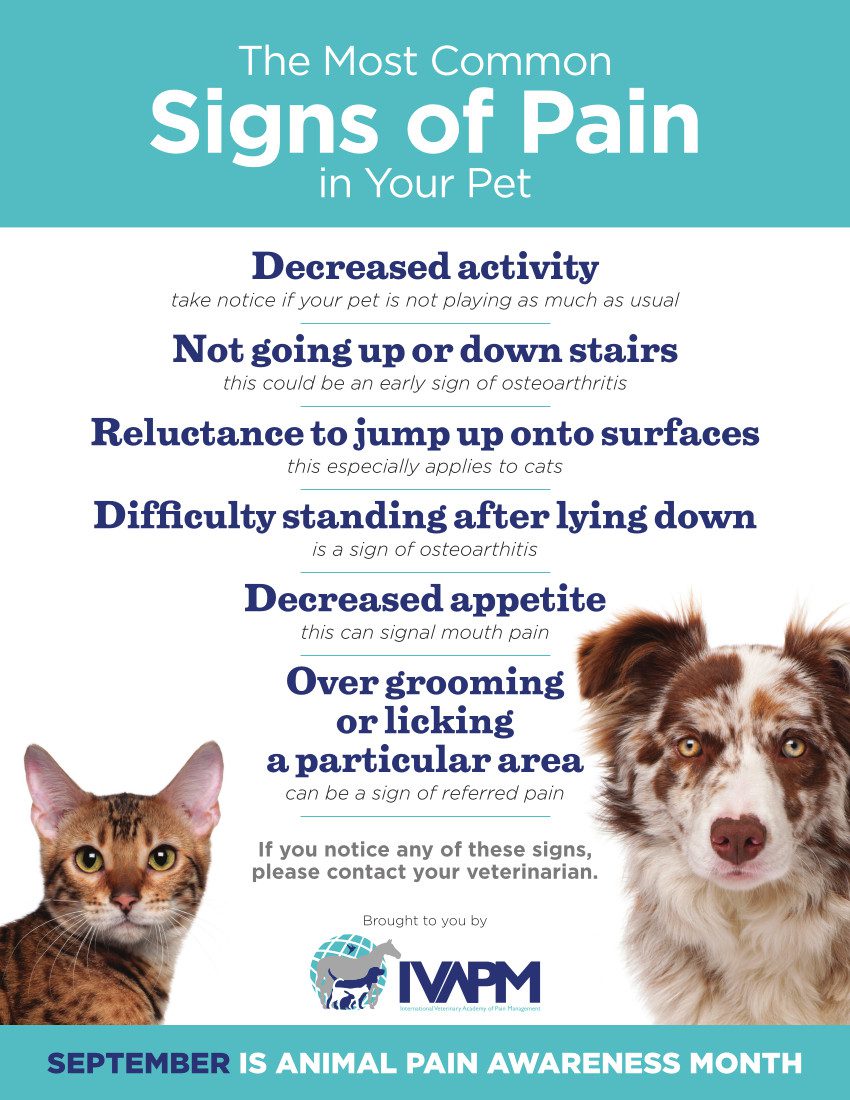September is Animal Pain Awareness Month, a great time to learn from three great pet pain medication and management videos about helping our pets live quality, pain-free lives.

Three Great Videos Share Best Pet Pain Medication and Management Tips
We just discovered Dr. Em, aka The Vet Med Corner, and we think she is pawesome! She is a Canadian veterinarian looking to help spread research based information to all on YouTube and on Facebook. And she is doing just that, especially when it comes to pet pain medication and management. “Most of our pets will go through pain of some sort during their lives, and often multiple times,” she explains. Her mission to get the word out is rockin’ our world.
In the first of three excellent pet pain medication and management videos, she gets into everything you need to know about the most current pain management prescriptions used in vet medicine, including Gabapentin. She also discusses the latest research about Tramadol for dogs and cats (“Absolutely not a first line medication,” she says).

What options do we have for pain management?
Are there any safe and effective options that are over the counter (OTC)? What side effects are common? Why does your veterinarian want to check a bloodwork panel? Join Dr. Em to learn the answer to all these questions and more. She discusses:
- NSAIDs
- Aspirin
- Injectables (Adequan and Librela)
- Gabapentin
- Amantadine
- Tramadol
- Opioids
- Buprenorphine
- OTC Medications
- Medication Changes
- Multimodal Pain Management and Quality of Life
A Veterinarian Explains How to Tell if Your Cat is Painful
“Cat pain is dramatically under treated. It is a huge problem!” says Dr. Em. We know from Tripawds three-legged cats community that this is spot-on 100% true! But how do we know if cats are hurting? Felines are masters at hiding pain signals!
What about if they aren’t limping or crying? How many cats have arthritis pain? What does their whisker position mean? Join Dr. Em as she answers these questions and more in today’s video all about cat pain! Learn about cat pain signs like:
- Change in Temperament
- Grooming Habits
- Guarding Behavior
- Vocalization
- Wounds / Incisions
- Mobility Changes
A Veterinarian Explains – How to Tell if Your Dog is Painful
“Pain is a very common cause of behavior changes in our dogs,” she explains. “Most especially causing increases in anxiety, or jumpiness, or noise hypersensitivity.” In this video, she explains what subtle pain signals look like, the differences between acute and chronic pain. Also, what about if they aren’t whining/crying? What does the prayer position mean? Join Dr. Em as she answers these questions and more in today’s video all about dog pain.
Know the Signs of Pet Pain
Remember, cats and dogs are very good at hiding pain. Just because they aren’t crying, limping, or whining, doesn’t mean they aren’t hurting. Know the signs, and advocate for pain management at your veterinary clinic. Your pets are depending on it.

 Join the forum discussion on this topic!
Join the forum discussion on this topic!